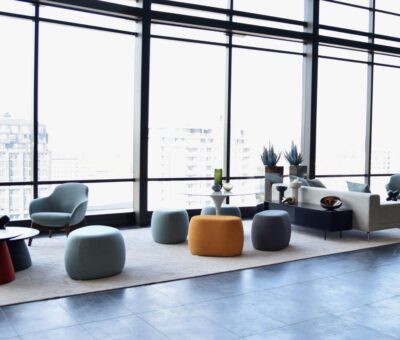Seating: Alone Together
Co-creation and collaboration are the new norms. The modern workplace demands a new space-planning approach. Seating believes that furniture should have personality and have designed pieces to interact with each other.
The way we work has changed. Amid the complexities of comprehensive design — materials, technology, personalities and organizational culture — simplification is key. Everything points to the need for a human-centred design approach.
Workspaces should be designed with collaboration, productivity and technology use in mind, while adding the comforts of home: a movement known as Resimercial. One of the great challenges the modern workplace faces is balancing the “alone” and “together” forces technology exerts.
Well-established contract furniture manufacturer and distributor Seating, stands strongly behind the philosophy of “unofficing” the office and bringing it back to people and nature, in essence: humanising it.
Just as abstract paintings promote thinking, an unusual working environment and deviations in shape and colour can have a stimulating effect —stirring people to think in new directions.
The world’s biggest contract furniture exhibitions: Orgatec, 100% Design, Neocon and Salon del Mobile — ardently promote a blurring of lines between home and workspace, and a move toward fluid ecosystems, seamless technologies and creative spaces, with choices for where and how to work.
Safe havens
People want privacy not cubicles. In the rise of the open floor plan, employees need destinations for private concentration and retreat more than ever. The solution is semi-enclosed settings that offer visual and acoustic privacy from the commotion of the open office and the opportunity for undistracted work.
Ease of Connectivity/Sense of Community
Our best thoughts can take shape when we’re in a state of transition. The goal is for spaces to inspire spontaneous meetings to occur in hallways and in the previously ignored spaces between offices. These informal collaborative meeting points provide the flexibility needed to keep employees engaged.
Highly interactive multimedia walls; holographic projectors, self-powered, flexible furniture, live-feed virtual rooms and pop-up, mobile game station/workstations, are some of the things we can look forward to in the near future… but without the emotional connection of people to the space — these mean nothing.
Residential sensibilities
There is a softening of the workplace and more sophisticated ergonomic design to ensure that the emphasis is comfortable aesthetics that create empathy rather than focus purely on function.
We see a rise of ancillary pieces, warm tones and metallic touches of brass and copper finishes combine for inviting atmospheres.
Human-centric design
Harvard Business Review reports that: “Face-to-face interactions are by far the most important activity in an office… Our data suggest that creating collisions—chance encounters and unplanned interactions between knowledge workers, both inside and outside the organization—improves performance.”
According to studies conducted by the influential West Elm Workspace… changing our perspective (literally) helps us to think differently.
They believe that design’s role in fostering the positive possibilities of life between offices revolves around creating exceptionally built environments that:
• Invite chance encounters—both between those physically present and those connecting from afar.
• Include multi-sensory elements to evoke the dynamic qualities of nature, disrupt the static feel of the indoors, and awaken our dormant faculties. Sunlight, plants, scents, snacks, music, and natural materials like wood and wool can all play a role in creating a wholly stimulating work environment.
• Mimic inspired neighborhood layouts in their emphasis on spatial diversity, walkability, and accessible public spaces.
• Offer comfortable retreat areas to take the energy gleaned from collisions and sensory input and distill it into excellent individual work.
• Now that we know how important connecting spaces are, we can pay more attention to thoughtfully designing liminal areas like hallways for maximum human benefit—instead of treating them as afterthoughts in the design process.
Smart, human-centric design can support us as we balance our needs to concentrate, connect with our community, and access information. Being alone and together is an ever-shifting dance, but it is possible to do it with grace, if we do it by design.
With an internal R&D department and both office and soft seating divisions, Seating believes in the local design and manufacture of at least 80% of their products. Offering over one-hundred products; they can also assist in space-planning, renders, project management and installations.
For more visit www.seating.co.za
You might also like...
-
The Neolith Approach to Modern Office Furniture

Gone are the days of standardized office setups that stifle innovation and limit potential. Enter the era of personalized, modern office furniture – where design ...
-
5 office Desk hacks for improved productivity:

Just making a few small changes to your desk space can maximize your performance and productivity. Lift your screen. Our Monitor Riser raises the screen ...
-
Krost Office Products

Originally founded in 1914, Krost Office Products is a local company that designs, manufactures and distributes office equipment. This includes desk sets, seating and accessories ...
































